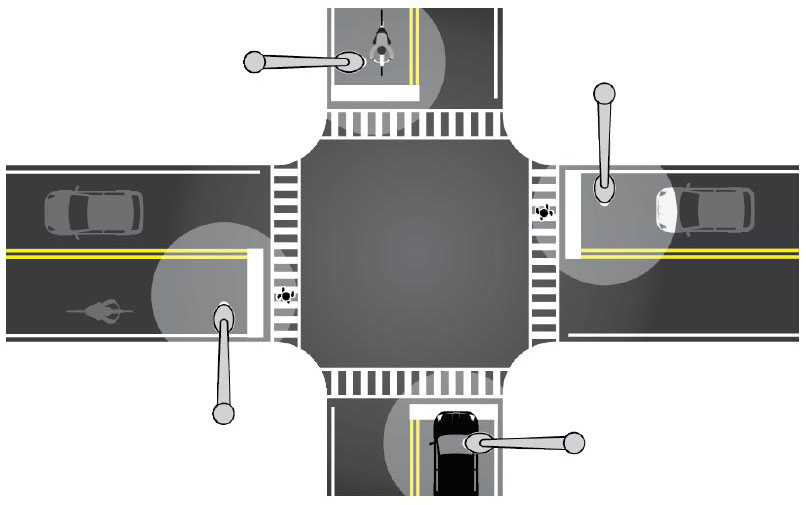U.S. Department of Transportation
Federal Highway Administration
1200 New Jersey Avenue, SE
Washington, DC 20590
202-366-4000
The number of fatal crashes occurring in daylight is about the same as those that occur in darkness. However, the nighttime fatality rate is three times the daytime rate because only 25 percent of vehicle miles traveled (VMT) occur at night. At nighttime, vehicles traveling at higher speeds may not have the ability to stop once a hazard or change in the road ahead becomes visible by the headlights. Therefore, lighting can be applied continuously along segments and at spot locations such as intersections and pedestrian crossings in order to reduce the chances of a crash.
Adequate lighting (i.e., at or above minimum acceptable standards) is based on research recommending horizontal and vertical illuminance levels to provide safety benefits to all users of the roadway environment. Adequate lighting can also provide benefits in terms of personal security for pedestrians, wheelchair and other mobility device users, bicyclists, and transit users as they travel along and across roadways.

Source: FHWA
Roadway Segments
Research indicates that continuous lighting on both rural and urban highways (including freeways) has an established safety benefit for motorized vehicles.1 Agencies can provide adequate visibility of the roadway and its users through the uniform application of lighting that provides full coverage along the roadway and the strategic placement of lighting where it is needed the most.
Intersections and Pedestrian Crossings
Increased visibility at intersections at nighttime is important since various modes of travel cross paths at these locations. Agencies should consider providing lighting to intersections based on factors such as a history of crashes at nighttime, traffic volume, the volume of non-motorized users, the presence of crosswalks and raised medians, and the presence of transit stops and boarding volumes.
Most new lighting installations are made with breakaway features, shielded, or placed far enough from the roadway to reduce the probability and/or severity of fixed-object crashes. Modern lighting technology gives precise control with minimal excessive light affecting the nighttime sky or spilling over to adjacent properties. Agencies can equitably engage with underserved communities to determine where and how new and improved lighting can most benefit the community by considering their priorities, including eliminating crash disparities, connecting to essential neighborhood services, improving active transportation routes, and promoting personal safety.
Sources
1. Elvik, R. and Vaa, T., ”Handbook of Road Safety Measures.“ Oxford, United Kingdom, Elsevier, (2004).
Filter countermeasures by focus area, crash type, problem identified, and area type.
